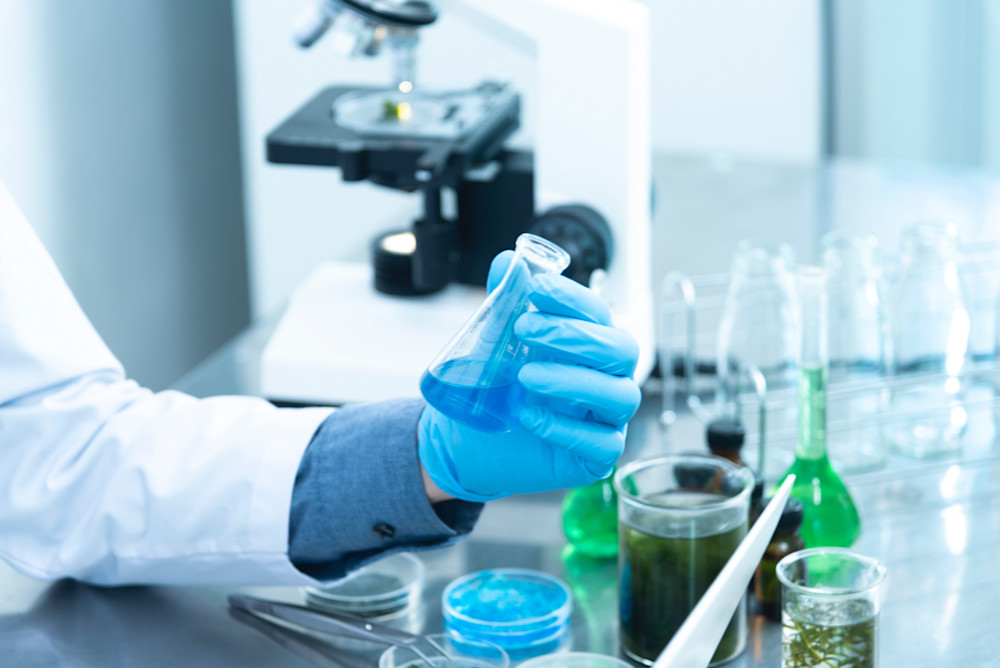CHN(O)S elemental analysis
CHN(O)S elemental analysis (or ”LECO analysis”) is a cost-effective method for determining carbon (C), hydrogen (H), nitrogen (N), sulfur (S), and oxygen (O) contents in organic and inorganic samples. The method is based on the complete combustion of the sample and it can detect even small elemental quantities. CHNOS measurements can be performed on solid, liquid, volatile, and viscous substances. The sample size can be relatively small.

Simple pricing model, no hidden fees
- Fast turnaround times
- Personal service from method experts
- Competitive prices
- Result accuracy guarantee
What is CHN(O)S elemental analysis?
The CHN(O)S elemental analysis is an analytical tool that relies on the dynamic flash combustion based on the Dumas method. It is used to determine the contents of carbon (C), hydrogen (H), nitrogen (N), sulfur (S), and oxygen (O). CHN(O)S analysis can give quantitative or qualitative results. Qualitative analysis tells which elements are found in the sample and quantitative analysis tells how much of each element is present. The sample size can be relatively small without loss of accuracy.
How does the analysis work?
The determination of CHNOS elements is done indirectly from combustion products. The sample is combusted at high temperature in a pure oxygen environment to allow a complete reaction of carbon, hydrogen, nitrogen, and sulfur to their combustion products (CO2, H2O, N2, and SO2). Also, a carrier gas, typically helium, is added.
After the combustion, the gas mixture goes through copper, which removes the excess oxygen and reduces the nitrogen oxides to elemental nitrogen. Absorbent traps are used to collect impurities allowing only CO2, N2, H2O, and SO2 to be directed to the detector.
The detection of the gas components in the final gas mixture can be done in different ways depending on the required outcome. Gas chromatography can be used to separate the components before detecting the individual gases with a thermal conductivity detector or using a series of separate infrared and thermal conductivity cells to identify components in the gas. The contents of each element are then calculated by comparing the results from the measurements to theoretical values and finally calculating the corresponding element contents as mass percentages of the sample.
Because of the combustion, C, H, N, and S elements are converted to CO2, H2O, N2, and SO2 and the amount of each gas is recorded. The determination is done indirectly from gas measurements by using the ideal gas law.
Oxygen is also determined indirectly from the sample. Different from the other elements, oxygen is pyrolyzed by a hydrogen-helium (H2–He) gas mixture. After combustion, all oxygen-containing products are converted to carbon monoxide with the catalysts, and similar indirect elemental determination is done.
Need a CHN(O)S analysis?
Measurlabs offers high-quality CHN(O)S analyses at affordable prices. If you have any questions about your sample or its suitability for the method, our experts are always happy to help. You can contact us through the form below or by emailing us at info@measurlabs.com.
Suitable sample matrices
- Solid or liquid, volatile and highly viscous substances
- Biomass like wood pellets and other biofuels
- Organic heterogeneous materials like plastics and rubbers
- Pharmaceutical products
- Carbonate containing materials
Ideal uses of CHN(O)S analysis
- Analyzing the amounts of Carbon, Hydrogen, Nitrogen, Sulfur, and Oxygen
- Determining overall protein amounts in foods
- Composition analysis in biofuel industries
- Safety control for industrial wastewaters
- Investigating organic compound compositions and purity in the pharmaceutical industry
Ask for an offer
Fill in the form, and we'll reply in one business day.
Have questions or need help? Email us at info@measurlabs.com or call +358 50 336 6128.
Frequently asked questions
CHN(O)S analysis is used to quantify the carbon, nitrogen, hydrogen, sulfur, and oxygen contents in the analyzed materials. It is commonly used in various industries, such as biofuel and pharmaceuticals, for quality control and product development purposes. The food industry also uses CHN(O)S for protein analysis.
In addition, CHN(O)S analysis may be used in the identification of unknown samples and as a part of biobased content determination and certification according to the EN 16785-1 standard.
High water content in the CHNOS sample might require drying before analysis since initial water content contributes to the determination of H-content. If needed, water content determination can be performed using Karl Fischer titration to check whether drying is necessary.
CHNOS analysis gives only the content of C, H, N, S, and O in the sample, not the structural information or functional groups. Information on the isotope composition of the sample can be obtained using the IRMS method.
CHNOS samples can be in the form of solid, liquid, volatile, or viscous substances. Both organic and inorganic samples can be analyzed.
Measurlabs offers a variety of laboratory analyses for product developers and quality managers. We perform some of the analyses in our own lab, but mostly we outsource them to carefully selected partner laboratories. This way we can send each sample to the lab that is best suited for the purpose, and offer high-quality analyses with more than a thousand different methods to our clients.
When you contact us through our contact form or by email, one of our specialists will take ownership of your case and answer your query. You get an offer with all the necessary details about the analysis, and can send your samples to the indicated address. We will then take care of sending your samples to the correct laboratories and write a clear report on the results for you.
Samples are usually delivered to our laboratory via courier. Contact us for further details before sending samples.